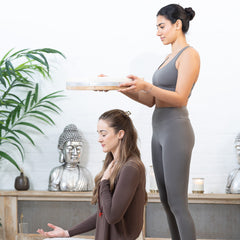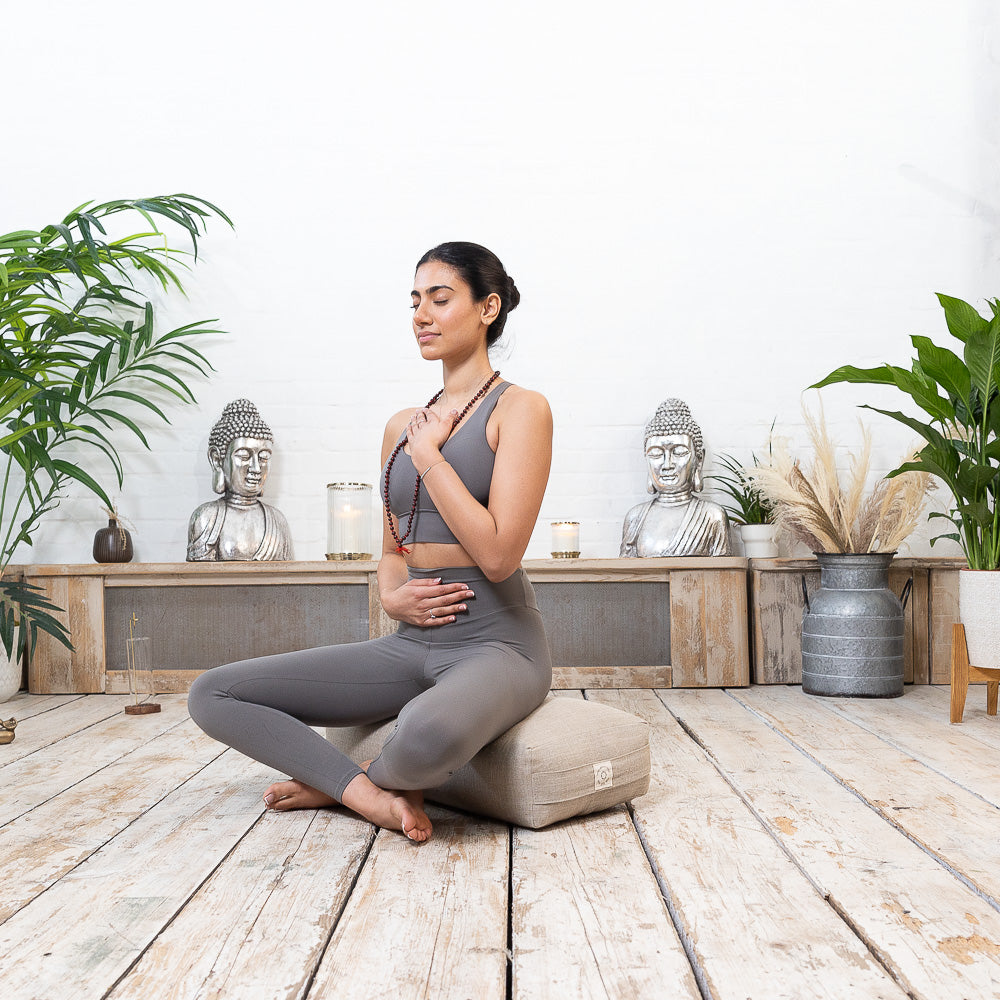When we control our breathing, we control our awareness, our focus and our energy. Breathing is a behaviour. Breath awareness is self awareness. When the breath flows fully and freely our natural creative and healing energies flow fully and freely.
‘When your state changes, your breathing pattern changes. And it’s a two-way street: when you change your breathing pattern, you change your state! We can use the breath to hack into our nervous system, our brain, our immune system. We can use the breath to choose our state!- Dan Brulé
Breathing is an involuntary action, meaning our bodies will breathe, keeping us alive without us having to consciously think about it.
The reality is that over 90% of us are using less than 50% of our breathing capacity.
We inhale short, shallow breaths, not using the whole of our lung capacity. We exhale only partially, meaning our subsequent inhale is in turn also marginal. As a result, we are taking in less oxygen and not removing enough carbon dioxide. We are not fuelling our blood and therefore our bodies with enough energy and we are holding onto toxins and waste in our blood and vital organs.
We have a habit of adopting poor posture and alignment. We sit and stand with the shoulders rounded and our back hunched and this position results in the lungs being restricted. This poor posture means that the lungs are not utilised to their full capacity.
BREATH AND OUR EMOTIONS
Think about any negative emotions that you might feel; stress, anxiety or anger. Notice how your breathing would change in response to these emotions, either quickening or restricting the breath completely. Feeling too overwhelmed with emotion to breathe properly. This shallow or restricted breathing would cause you to feel more stressed, anxious, or angry. Amplifying these emotions in a counterproductive way, rather than utilising the breath to calm you down or move you out of this state. The freer our breath is, the less we are affected by trauma.
THE BENEFITS OF PRACTICING BREATH WORK
- Brings awareness to the present moment
- Looks inwards, avoiding external distractions
- Mental focus and clarity
- Enhanced coordination
- Reduces self destructive behaviour
- Change of energy and perspective
- Reduces pain
- Relaxation and rejuvenation
A gentle rising and falling breath stimulates the parts of the brain and nervous system responsible for creating a sense of calm. Soothing hormones flow through the body, calming negative thoughts. You begin to relax and breathe more slowly and deeply.
OUR TOP THREE FAVOURITE BREATH WORK PRACTICES
- Counting breath
- Diaphragmatic breathing
- Prolonged exhale
For each breathing technique, unless specified otherwise, try to stay seated. If you can sit in easy pose (cross legged) or sit upright with your legs out in front of you. If needed you can sit with your back against a wall or sit upright in a chair if you require support. Try to lengthen through the spine, sit tall with a straight back.
COUNTING BREATH
Benefits: A strength building exercise for the mind. Helps improve concentration and mental strength. Helps improve the ability to not get distracted by thoughts. Can be used as a meditation practice. Helps deepen and slow down the breath.
How to practice:
- Once sat upright in a comfortable position soften the eyelids until they close. Start to breath in and out through the nose.
- Breathe in and pause, exhale and pause. Perform both the inhale and exhale to a ‘mental’ count of one.
- Breathe in and pause, exhale and pause. Perform both the inhale and exhale to a ‘mental’ count of two.
- Breathe in and pause, exhale and pause. Perform both the inhale and exhale to a ‘mental’ count of three.
- Continue breathing in and out, deepening and lengthening the breath until you reach the count of 10. If you get distracted by thoughts and loose what number you have reached then go back to the top and start again.
DIAPHRAGMATIC BREATHING
Benefits: This is Diaphragmatic breath work designed for deepening the breath. It has a sedative effect on the nervous system which relaxes the entire body and leads to quietude and inner harmony. Can aid digestion and is safe to practice if you are pregnant.
How to practice:
- To practice lie on your back with your knees bent and your feet flat on the ground, wider than your hips, let the knees drop inwards towards each other.
- Place your right hand on your solar plexus, the other hand can rest on your chest and should remain relatively still throughout the practice.
- Inhale through the nose and as you do so, gently tighten your abdominal muscles just enough to stop the belly from lifting during your inhale.
- As you continue to breathe in your diaphragm will draw your lower ribs up and apart. As you exhale allow the ribs to fall back to their resting position, don’t force your stomach inwards or actively engage your abdominals, but allow them to draw back into their starting position.
PROLONGED EXHALE
Benefits: Supports the parasympathetic nervous system, quiets the mind and brings about a state of focus. It can help to reduce insomnia and sleep disturbances and help those suffering with anxiety.
How to practice:
- You can either practice sat upright or on your back with your knees bent and your feet flat on the ground (try lying on your back if practicing before bed).
- Start by breathing normally, breathing in and out through the nose and mentally count the length of your inhale and exhale. Over the next few breaths start to match the length of your breathing.
- Once your inhalation and your exhalation are equal, gradually begin to lengthen your exhale. Do this by only a few seconds and gently contract your abdomen to do so. Keep the breath smooth and relaxed.
- Keep lengthening the exhale until it is up to twice the length of the inhalation. For example inhale for a count of 4 and exhale for a count of 8.
- Don’t push too hard beyond your capacity; the exhale only has to be a little longer than the inhale to bring about the calming effect. Finish your practice with 6-8


